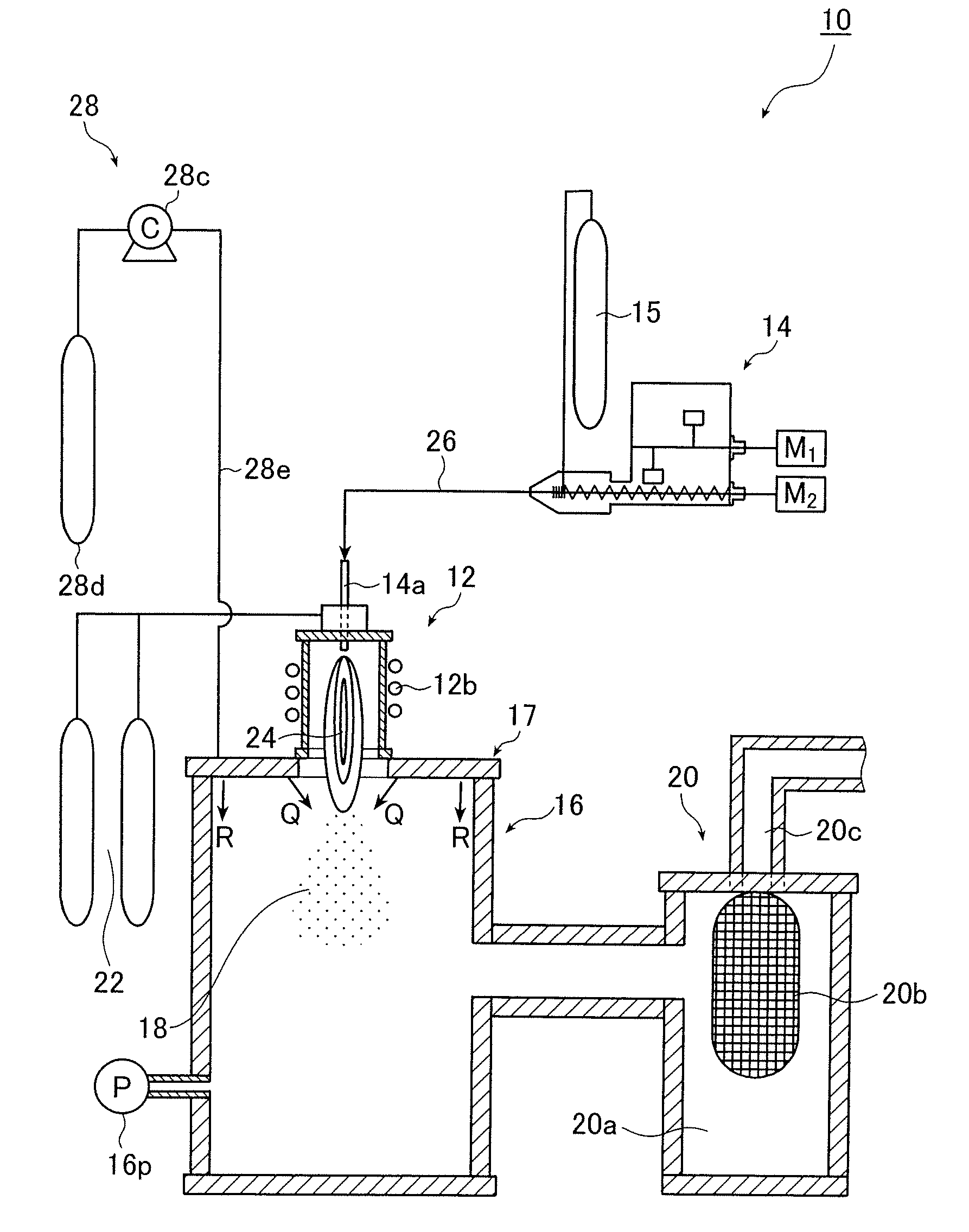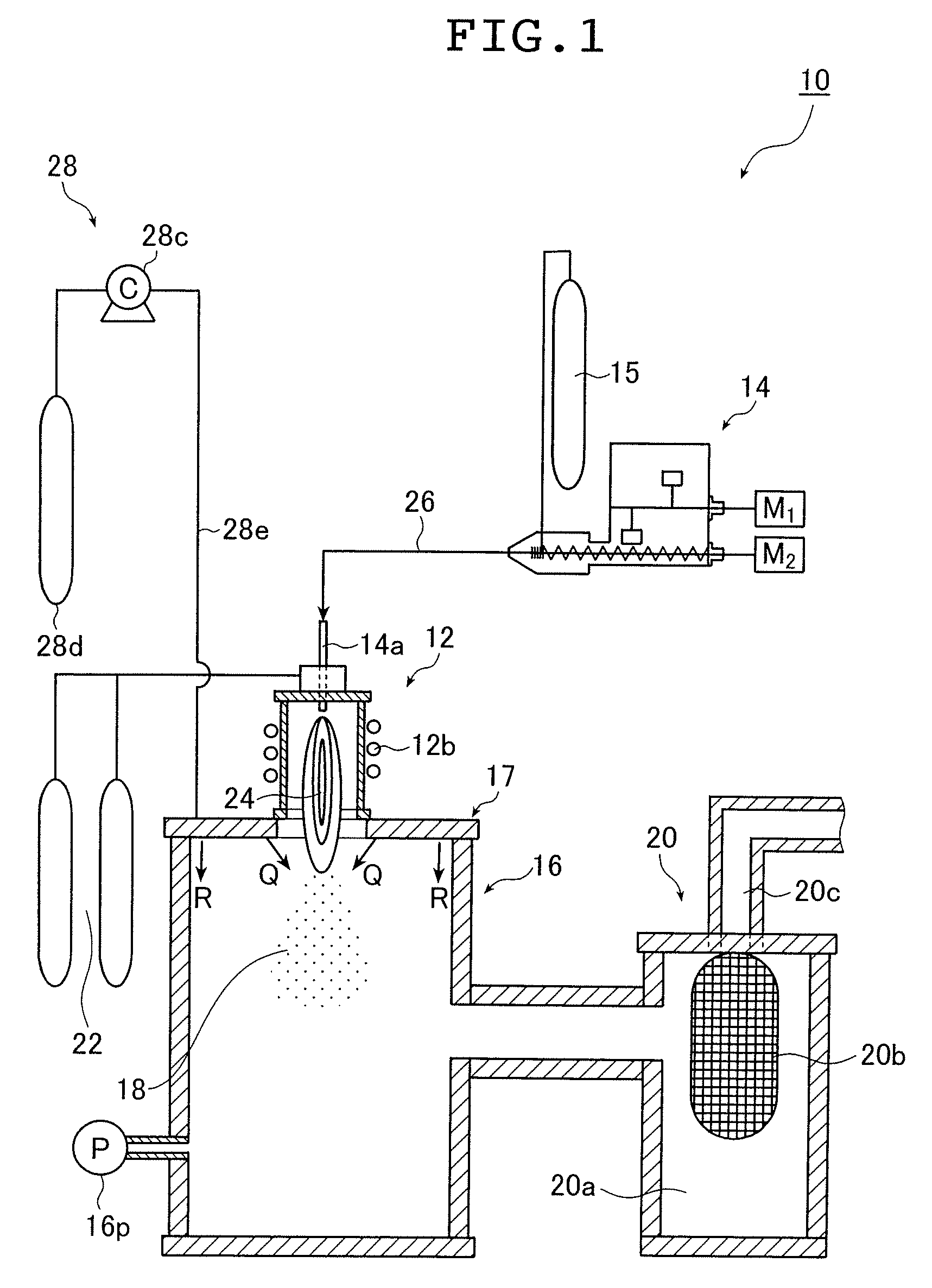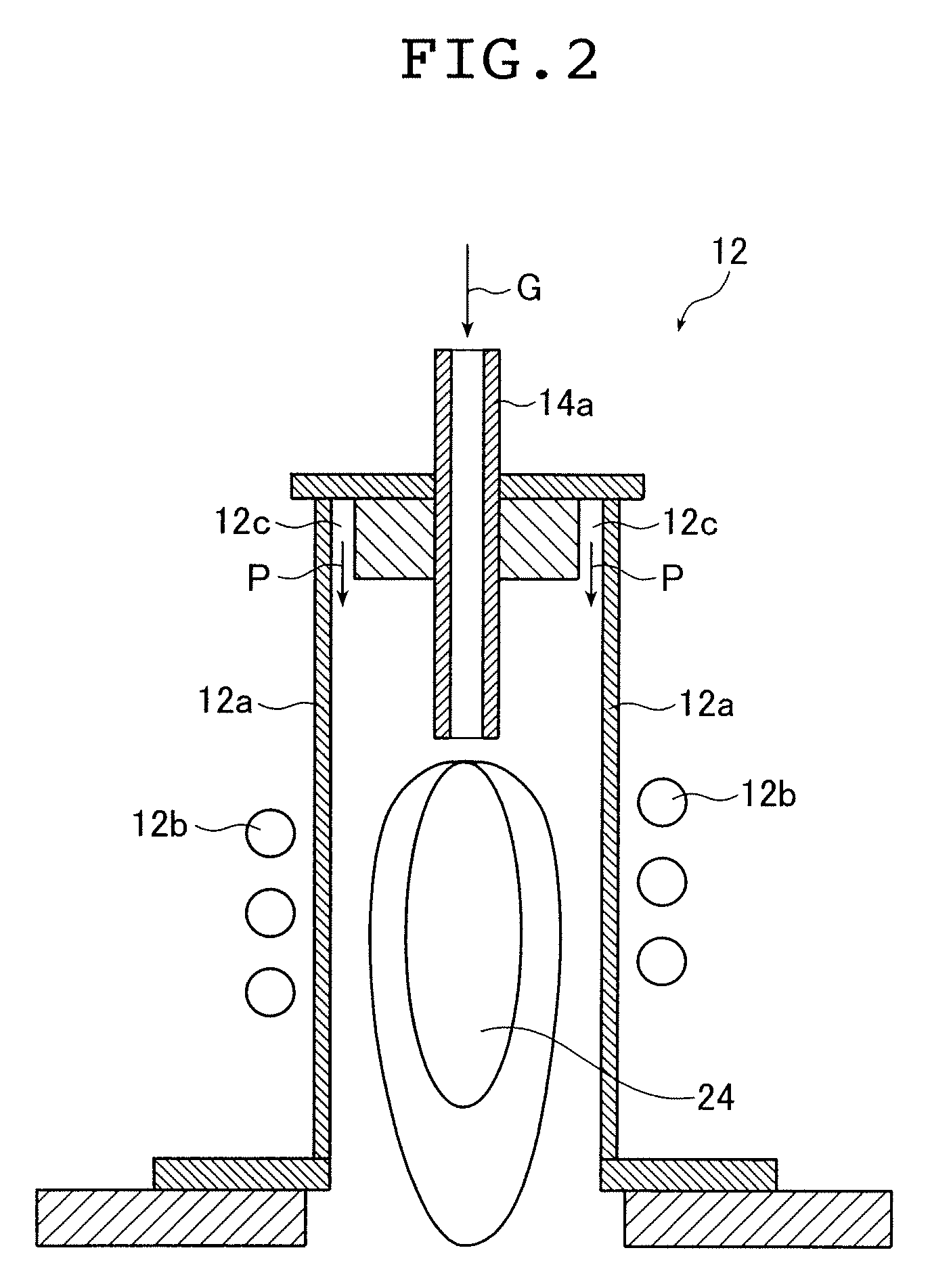Ultrafine alloy particles, and process for producing the same
a technology alloy powders, applied in the field of ultrafine alloy particles, can solve the problems of not meeting the demands of ultrafine powder, the limit of raising the heating temperature applied to and the inability of ultrafine powder to form wirings on semiconductor substrates or printed wiring boards
- Summary
- Abstract
- Description
- Claims
- Application Information
AI Technical Summary
Benefits of technology
Problems solved by technology
Method used
Image
Examples
example 1
[0130] First, an example in which ultrafine alloy particles comprising an alloy of silver and palladium were produced and agglomeration and coalescence of the particles to each other were prevented is presented.
[0131] As raw materials of a material for producing the ultrafine alloy particles, a silver powder having an average particle size of 4.5 μm and a palladium powder having an average particle size of 5 μm were used. The mixture mass ratio (mixing ratio) between the silver and palladium was 87:13.
[0132] As to melting points of silver and palladium, it is known that palladium has a melting point of 1540° C., which is higher than that of silver. At the temperature of the melting point of palladium, 1540° C., a vapor pressure of silver reaches 7.14×10−2 Pa while that of palladium is 6.28×10−5 Pa, resulting in a vapor pressure ratio of 1:8.80×10−4 (0.880×10−3) (i.e., 1137:1) on the order of 10−3 difference.
[0133] Here, argon was used as a carrier gas.
[0134] The high frequency o...
example 2
[0139] Next, an example is shown in which the ultrafine alloy particles comprising an alloy of iron and aluminum were produced, and agglomeration and coalescence of the particles to each other were prevented.
[0140] As raw materials, an iron powder having an average particle size of 3 to 5 μm and an aluminum powder having an average particle size of 5 μm were used. The mixture mass ratio (mixing ratio) between the iron and aluminum was 98:2.
[0141] As to melting points of iron and aluminum, it is known that iron has a melting point of 1550° C., which is higher than that of aluminum. At the temperature of the melting point of iron, 1550° C., a vapor pressure of iron reaches 2.67×10−4 Pa while that of aluminum is 1.37×10−6 Pa, resulting in a vapor pressure ratio of 1:5.13×10−3 (i.e., 195:1) on the order of 10−2.3 difference.
[0142] Similarly to Example 1, argon was used as a carrier gas.
[0143] Here, the high frequency voltage to be applied to the plasma torch 12 and the supply amount...
examples 3-12
[0159] Ultrafine alloy particles comprising a primary metal and a subsidiary metal were produced in Examples 3 to 12 using raw material powders in the respective combinations of the primary metal and the subsidiary metal shown in Table 1 under the same production conditions and through same processes as those in Example 1. Raw material powders of the primary metal and the subsidiary metal having average particle sizes, vapor pressure ratios (primary metal / subsidiary metal) and mixture mass ratios therebetween as shown in Table 1 were used in Examples 3 to 12.
[0160] Each particle size of the ultrafine alloy particles produced in Examples 3 to 12 was obtained similarly to Example 1.
[0161] The results are shown in Table 1.
TABLE 1MixtureAverage Particle Size of Raw Material PowdersMass RatioAverageAverage(PrimaryParticleSub-ParticleMetal:VaporUltrafineParticlePrimarySizesidiarySizeSubsidiaryPressureAlloySizeMetal(μm)Metal(μm)Metal)RatioParticles(nm)Ex. 3Ag4.5Cu585:1562.5:1Ag—Cu30Ex....
PUM
| Property | Measurement | Unit |
|---|---|---|
| thickness | aaaaa | aaaaa |
| core particle size | aaaaa | aaaaa |
| size | aaaaa | aaaaa |
Abstract
Description
Claims
Application Information
 Login to View More
Login to View More - R&D
- Intellectual Property
- Life Sciences
- Materials
- Tech Scout
- Unparalleled Data Quality
- Higher Quality Content
- 60% Fewer Hallucinations
Browse by: Latest US Patents, China's latest patents, Technical Efficacy Thesaurus, Application Domain, Technology Topic, Popular Technical Reports.
© 2025 PatSnap. All rights reserved.Legal|Privacy policy|Modern Slavery Act Transparency Statement|Sitemap|About US| Contact US: help@patsnap.com



